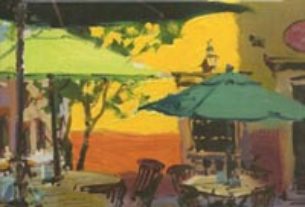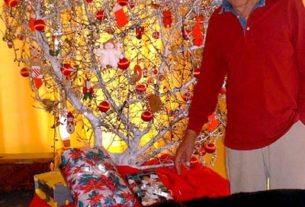Did You Know…?
Vultures (zopilotes in Spanish) are among the most conspicuous birds in many parts of Mexico. Commonly misidentified as eagles, these blackish scavengers can be seen almost anywhere, often in large flocks, either circling lazily overhead or feeding greedily on roadkill or other carrion. A few years ago, in the early morning mist at a municipal garbage dump near Tamazula, two hours drive south of Lake Chapala, there were so many black vultures spreading their wings and breakfasting that a group of Canadian ecotourists in my charge stood and stared in a mixture of wonderment and fear. To borrow a phrase from a Costa Rican natural history account, it resembled nothing so much as “a witches’ Sabbath.”
Mexico is home to both turkey vultures and black vultures. Adult turkey vultures have reddish heads, hence their name. They are large birds, about 70 centimeters (2.3 feet) in length, with a wingspan of more than 1.6 meters (5.25 feet). The turkey vulture (Cathartes aura) is easily distinguished in flight by its two-tone wings; the feathers nearer the body and head are much darker than those behind. Its flying pattern is equally distinctive: turkey vultures soar upwards on the breeze or in a thermal, outstretched wings held above the horizontal, tilting first to one side, then the other, scarcely bothering to flap.
The black vulture (Coragyps atratus) is a shorter, stockier bird (without any red on its head) that is nevertheless heavier than the turkey vulture and dominant to it when competing for a carcass. Black vultures have stubby tails and black wings with whitish blotches near their tips. They frequently resort to flapping their wings and appear unable to glide very far.
Sometimes seen feeding alongside vultures at carcasses is the longer-necked and larger-headed crested caracara (Polyborus plancus), a hawk with distinctive markings. Its bright red-orange face contrasts strikingly with a black crest and white neck and throat. Its name comes from its call, a harsh cackle, something like trak-trak-trak. The caracara doesn’t only eat carrion but also catches lizards, insects, and other small prey. This is almost certainly the bird which featured in the ancient Mendoza Codex (a pre-Columbian manuscript drawn on bark paper) and which (misidentified as an eagle) gave rise to Mexico’s national symbol. One of the more descriptive common names for the crested caracara, incidentally, is the quebrantahuesos, literally the bone-smasher!
While for a long time it was believed that turkey vultures had extraordinary eyesight and located their food by sight, it is now proven that they also have a highly developed sense of smell. The black vulture, on the other hand, appears to hunt carcasses either by sight alone or by following turkey vultures to arrive at carcasses not easily visible. Since black vultures are dominant to turkey vultures, once they arrive, they may effectively chase off their far-smelling restaurant colleagues.
Turkey vultures must satisfy their appetites by eating small carcasses that they can finish off quickly. Perhaps as a result, unlike high flying black vultures, turkey vultures quarter an area systematically, often keeping fairly close to the ground, a tactic which enables them to smell even small carcasses. Whereas it is rare for more than three or four turkey vultures to gather at any single carcass, black vultures can become very numerous around rich food sources like slaughterhouses and dumps. Both turkey and black vultures help keep the country clean.
Black vultures sometimes kill their own food (their weak talons mean that prey must be very small or weak) but both black and turkey vultures, having small unfeathered heads and hooked bills, are better adapted to a diet of carrion. Given their regular diet, vultures must either have digestive systems that process food very thoroughly or be very resistant to the toxins produced by rotting meat, or both. It is known that anthrax bacteria are destroyed on their way through the turkey vulture’s digestive system and fishermen claim that vultures can even digest brass fishhooks!
The ubiquitous and far-sighted vultures are easy to see – just stand still and look overhead – but too much inactivity could be dangerous. Don’t stand motionless too long or they might mistake you for their next meal…
Prior publication: Much of this article was originally published in Chapala Riviera Guide (1992) and reprinted in El Ojo del Lago (May 1994).



